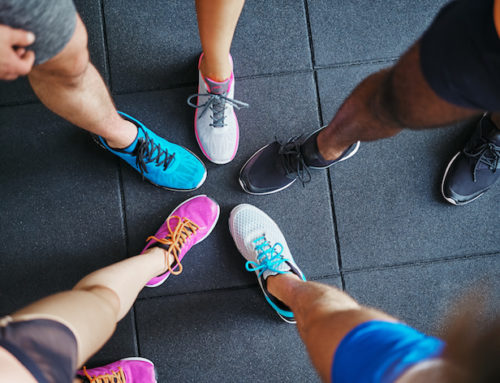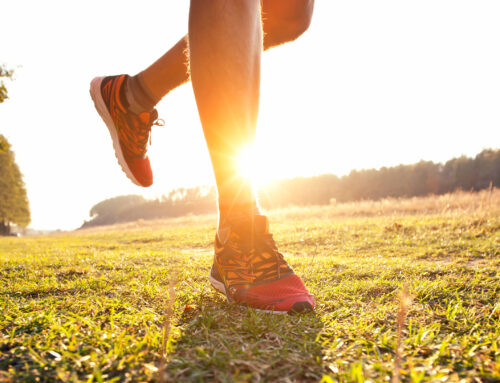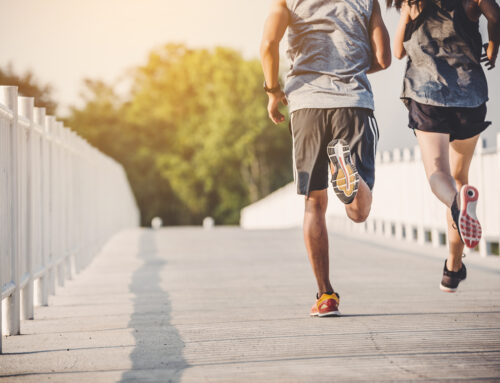Everything You Need to Know About Running After Eating
Every runner has to work out what works best for them in terms of running after eating, as discomfort while exercising is a common occurrence. Correctly timing food before a run can maximise the exercise and prevent feelings of nausea.
To help runners get the most out of their run, we’ve provided top tips for running after eating, including how long to wait after eating, good snacks to eat before and after runs, and how to avoid stitches. If you are a beginner, check out our running tips for beginners to get started.
How Long Should I Wait to Run After Eating?
This is one of the most frequently asked questions in the running world. As everyone is different, the answer varies. You should always wait to run after eating, however the length of time depends on what was eaten, your body and the intensity of the exercise.
The general rule is: wait 3-4 hours after a large meal, 2-3 hours after a small meal, and at least 30 minutes (ideally 1-2 hours) after a snack.
The exact timings vary from person to person, so it is advisable to work out what works best for you. Some runners can have a snack and run instantly, whereas others may need to wait an hour.
Why Wait to Run After Eating?
So, we’ve established you should wait to run after eating, but we haven’t established why.
You may have experienced discomfort or sluggishness on runs before, likely due to food. While food is key to properly fuelling the body before exercise, it’s important to not overdo it and wait for digestion to occur.
The process of digestion uses a lot of the body’s energy and directs blood flow to the stomach and internal organs instead of large working muscles, including arms and legs. When running, blood flow is directed away from organs to working muscles. Therefore, the two processes do not successfully occur concurrently.
To reduce sluggishness, slowness, and nausea, it’s critical to wait after eating before running.
What to Eat Before Running?
Before running, it is important to fuel the body and keep blood sugar levels from crashing. Advisable snacks and meals to consume vary according to the time of day. Below we have provided example snacks to consume depending on the time of day the run is taking place.
Generally, runners should consume snacks containing carbohydrates (important for energy) and protein (key to muscle growth and recovery). Acidic or dairy-based foods should be avoided before a run. Find out more about food for runners with our guide to diet and nutrition for runners.
Morning run
As it’s unlikely those who run in the morning also have time to cook, eat and digest a full meal prior to running, a snack is advisable 30 minutes to 1 hour before morning runs. Carbohydrates and protein containing snacks should prevent hunger and suitably fuel the body.
Suggestions include:
- Banana with tablespoon of peanut butter
- Energy bar
- Yogurt and fruit
- Healthy smoothie
- Whole grain bagel
Lunchtime run
For an effective lunchtime run, it is recommended to have a large breakfast that fuels the day, then snack to overcome hunger pangs and energy slumps.
Snack ideas:
- Cereal
- Peanut butter sandwich
- Healthy smoothie
- Handful of nuts (cashews, pistachios, almonds etc.)
Evening run
Those who run in the evening are likely to be hungry from waiting for a later dinner in order to make time for a run.
Filling afternoon snacks:
- Cheese and crackers
- Energy bar
- Peanut butter sandwich
What to Eat After Running?
Eating before a run is important for fuelling the body and creating energy, whereas food after a run is key for recovery. Following a run, it is vital that a runner rehydrates and refuels their body, ideally with a light meal and plenty of fluids.
To promote muscle growth, restore glycogen stores and enhance recovery, runners should eat carbohydrates and protein containing meals after a run.
There is no exact time constraint as to when food should be consumed after a run, therefore runners should listen to their body and eat when hungry.
Tips to Avoid Discomfort While Running
Poor preparation for a run can lead to discomfort while exercising, so we’ve listed common discomforts felt by runners, why they occur, and how to prevent them.
Cramps
Gastrointestinal discomfort (cramps, bloating and stomach aches) in runners can often be attributed to dehydration. Generally, runners should aim to stay hydrated normally, however, they should increase water intake even during runs (drinking every 15-30 minutes) if they are experiencing cramps.
Nausea
Runners can feel sick or even vomit during or after a tough workout. Nausea is the body’s way of saying something is off kilter, often highlighting an issue with dehydration, slower digestion or heatstroke. To alleviate nausea, runners should drink plenty, especially on hot days, take it slow, and bring a snack for after the run.
Stitch
Stitches are extremely common for runners, however the exact causes behind them aren’t clear. The best ways to prevent a stich, or decrease the intensity of a stitch, is to avoid big meals before exercise, stay hydrated and take it slow. Check out our guide to avoiding stitches when running for more helpful tips.
When runners experience discomfort, the best thing they can do is slow down, assess the problem and consider solutions. Maintaining intense exercise only prolongs and intensifies the issue, creating more discomfort.
Run with Race At Your Pace
Take on your next running challenge and apply your running knowledge with Race At Your Pace! Popular with beginners and running enthusiasts alike, we provide a range of monthly challenges for running, walking, cycling, stepping, and swimming, covering distances from 2 to 200 miles – we even have kids challenges! All you have to do is choose a distance, race at your pace to complete the milage over the course of the month then receive a shiny medal.



